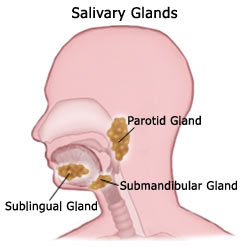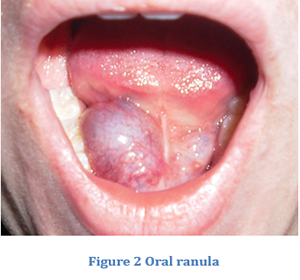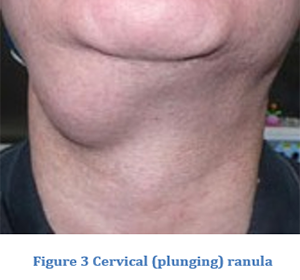EXCISION OF SUBLINGUAL GLAND/RANULA
 Fig.1 - Major Salivary Glands
Fig.1 - Major Salivary Glands
There are three major salivary glands in the head and neck: the parotid, submandibular, and sublingual glands (figure 1). In addition to these major glands, there are over 500 minor salivary glands lining the inside of the mouth. Surgery for the parotid and submandibular glands is discussed elsewhere on the website.
The primary reason for surgery on the sublingual gland is a ranula. There are two types of ranulas: oral ranulas and cervical (plunging) ranulas. Each type presents with different symptoms. Oral ranulas are due to mucus that pools ABOVE a muscle in the neck called the mylohyoid. Oral ranulas appear as a soft swelling in the floor of mouth just below the tongue (figure 2). Cervical or plunging ranulas are associated with mucus that accumulates BELOW this muscle, forming a collection in the upper neck. Thus, they often present as a mass in the upper neck just below the jawline (figure 3).
Ranulas originate from the sublingual glands; hence, the optimal treatment is removal of this gland. This is done through an incision inside the mouth. If there is a cervical (plunging) ranula, sometimes an incision in the mouth will be used to remove the sublingual gland in conjunction with a separate incision in the neck to remove the plunging portion. Your physician at Suburban Ear, Nose, and Throat is uniquely trained in surgery of the major salivary glands in the head and neck.


